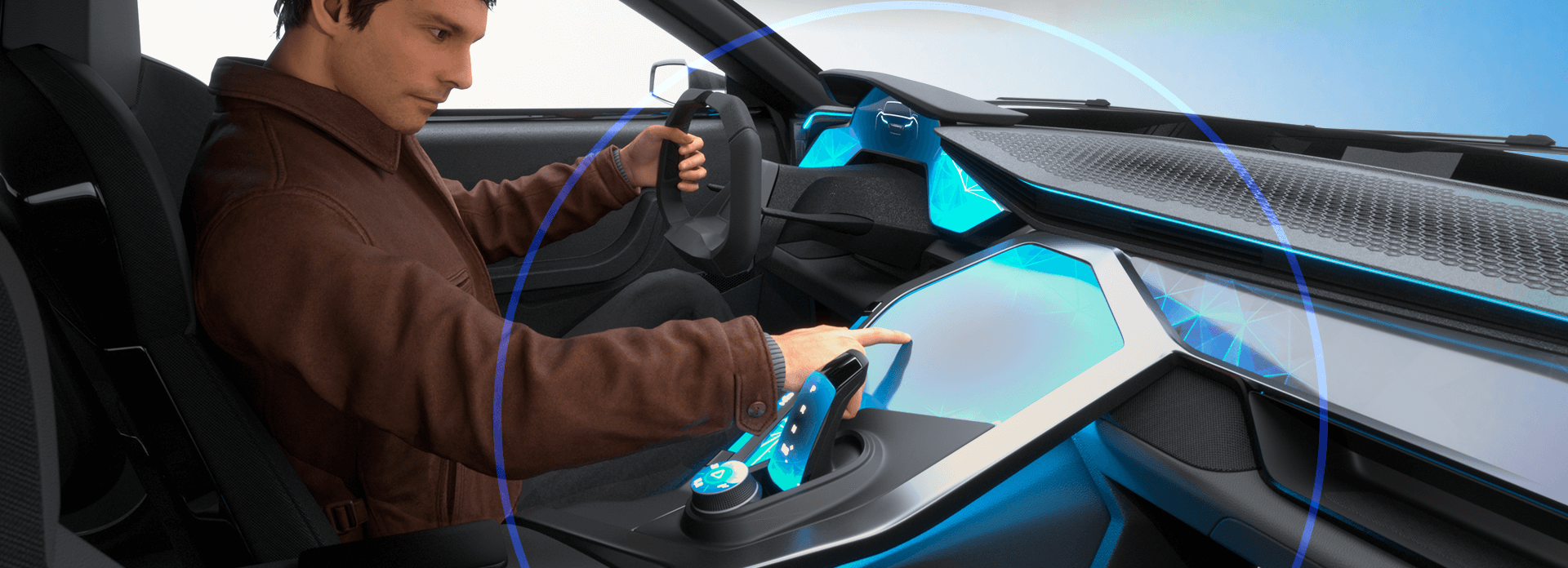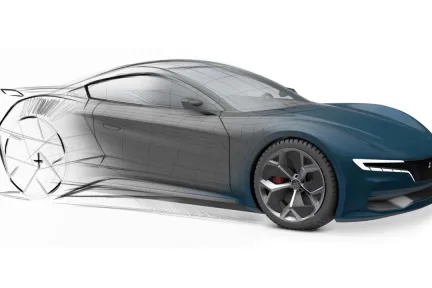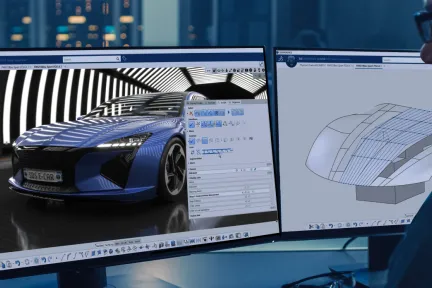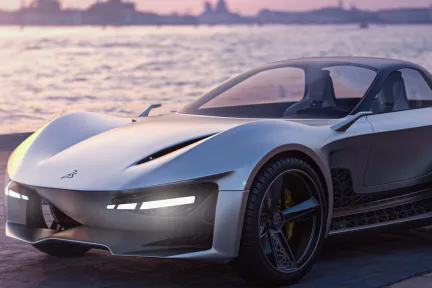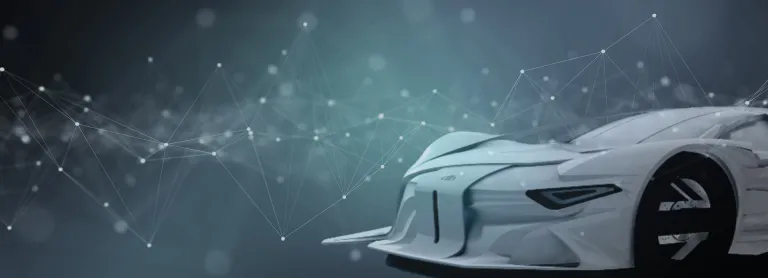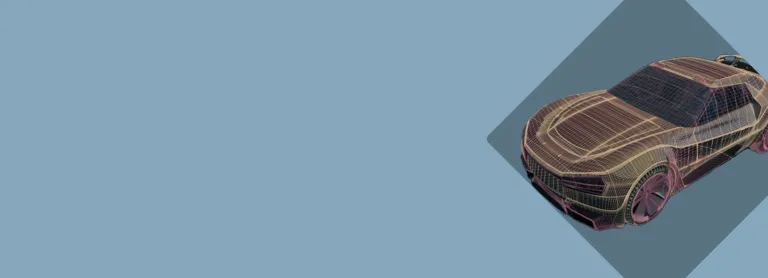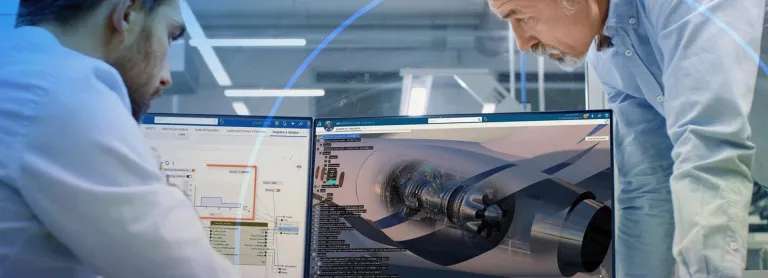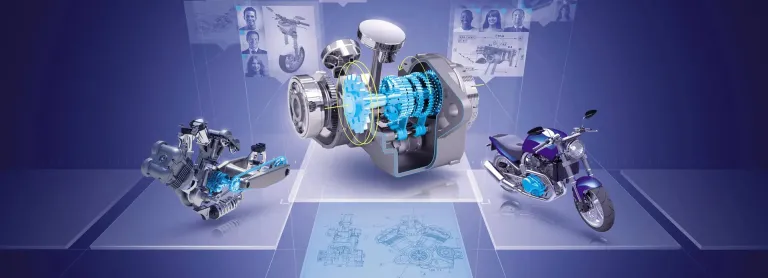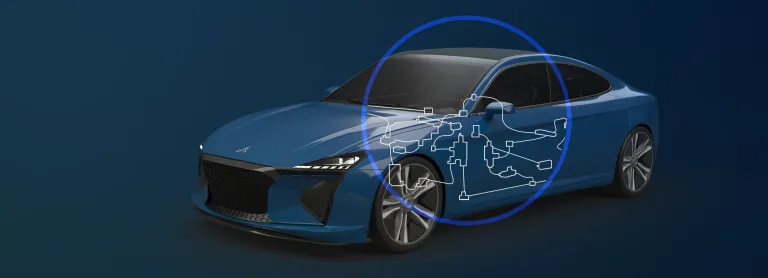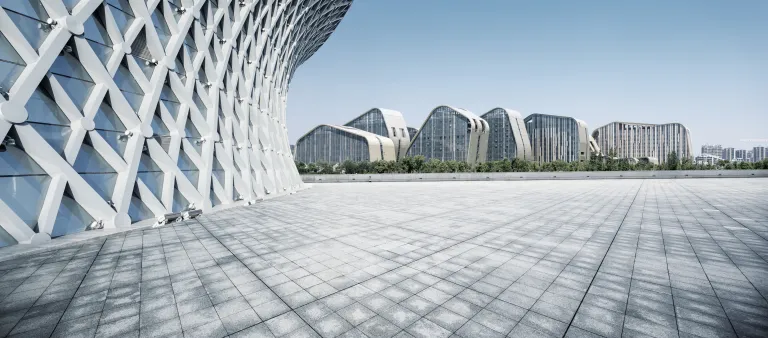Design & Styling
A Unified Industrial Design Workflow Solution
Imagine, Create, Experience Sustainable & Delightful Design Experiences
From product to transportation industries, the style & design of the product plays a major role in its success on the market. Develop shape & material creativity, reach a high level of surface sophistication & quality, and get the right decision tools with physical & virtual prototypes: these are the key elements of CATIA Design & Styling to boost design innovation.
CATIA Design & Styling provides all the solutions for design creativity, surface excellence and product experience, meaning that you can combine 3D sketching, subdivision surface, Class-A modeling to 3D printing, reverse engineering, realistic visualization and virtual and augmented product experience, to create and develop renderings in an integrated process, with a seamless workflow.
CATIA Design & Styling Key Benefits
Boost Creativity & Experience Design Thinking
Create and explore innovative conceptual ideas with an integrated creative workflow, all in the context of the Human to enrich the Design experience.
Create Faster the Most Sophisticated Surfaces
Create the best surface Quality, Optimization and Performance to reach the high standards of Automotive Class-A Surfaces, Aero lofting or Naval Architect Hull form.
Make the Right Decision Quicker with the Virtual Twin
Take advantage of a high-end visualization with Immersive Virtual & Augmented Reality Experience, for an Accurate Decision Making during the product development process.
Boost Design Innovation
Imagine, Create & Experience the products of tomorrow with no limits, and take advantage of intuitive CATIA solutions, from creative design to surface modeling to product experience, to explore more ideas at every phase of the design process thanks to the 3DEXPERIENCE platform. Explore the following disciplines.
Creating Consumer-Centric Experiences
CATIA Creative Design and Styling portfolio empowers our users to perform design sketch integration, ultra-fast 3D ideation concept modeling with subdivision surfaces, high-end surfacing, high-end real-time visualization, photo-realistic rendering and rapid prototyping: all in context of the Human and with design thinking methodologies, to create consumer-centric experiences. These solutions, applicable to all industries and scenarios, allows to create and develop renderings, surfaces and prototypes seamlessly, thanks to a unified workflow, a collaborative platform and interconnected solutions.
CATIA Design & Styling Roles
CATIA Design & Styling software products are packaged as Roles on the 3DEXPERIENCE platform to get you up to speed faster and work more efficiently with all needed applications available at your fingertips. Select a package that corresponds to your role in an organization.
Join the conversation in the CATIA Creative Design & Styling User Community!
Start Your Journey
FAQ about Industrial Design Engineering & Process
Product design encompasses the entire process of creating new products, focusing on functionality and user needs. Industrial design is a subset of product design, specifically emphasizing the aesthetic and ergonomic aspects of mass-produced goods, ensuring they are visually appealing, user-friendly, and cost-effective to produce.
Here are the main examples of industrial design include:
- Consumer Electronics: Smartphones, laptops, tablets, and wearable devices often undergo industrial design to ensure they are visually appealing, ergonomic, and functional.
- Furniture: Chairs, tables, sofas, and other furniture items are designed with consideration for both aesthetics and usability.
- Automobiles: Cars, trucks, and motorcycles undergo extensive industrial design to create visually striking exteriors, comfortable interiors, and intuitive control layouts.
- Packaging: Packaging design involves creating visually appealing and functional packaging for products, considering factors like protection, ease of use, and brand identity.
- Sporting Goods: Items such as bicycles, helmets, skis, and athletic shoes undergo industrial design to optimize performance, comfort, and aesthetics.
- Tools and Equipment: Hand tools, power tools, and machinery are designed with a focus on ergonomics, safety, and durability.
- Lighting Fixtures: Lamps, light bulbs, and other lighting products are designed to provide both functional illumination and aesthetic appeal.
Industrial design can be categorized into four main types: product design, transportation design, environmental design and graphic design.
- Product Design: Designing individual products for form, function, and user experience.
- Transportation Design: Focusing on vehicles and related systems like automobiles, trains, and boats.
- Environmental Design: Creating spaces within the built environment, including interior design and architecture.
- Graphic Design: Enhancing products and environments with visual elements such as branding and user interfaces.
An industrial design engineer is responsible for conceptualizing, designing, and developing products and systems that are both functional and aesthetically pleasing. Their role typically involves:
- Collaborating with cross-functional teams including designers, engineers, and marketers to understand project requirements and constraints.
- Conducting research to gather insights into user needs, market trends, and technological advancements.
- Generating concepts and prototypes through sketching, 3D modeling, and prototyping techniques.
- Using CAD (Computer-Aided Design) software to create detailed designs and technical drawings that meet engineering specifications.
- Considering factors such as manufacturing processes, materials selection, and cost-effectiveness during the design process.
- Testing and validating designs through prototyping, simulation, and user feedback.
- Ensuring that final designs meet quality standards, regulatory requirements, and project deadlines.
The role of an industrial product designer involves various responsibilities aimed at creating innovative and user-centric products. Some of the key aspects of their role include:
- Conceptualizing and developing innovative product ideas.
- Balancing aesthetics and functionality in design.
- Collaborating with teams to address technical constraints.
- Iteratively refining designs through prototyping and testing.
- Incorporating brand identity and ensuring regulatory compliance.
Industrial designers can transition into product design roles and vice versa, as both fields share similar skill sets. Industrial designers specialize in creating products for mass production, focusing on aesthetics, usability, and manufacturability.
Product designers have a broader scope, covering the entire product development process from conception to production. However, the skills needed for both roles often overlap, including:
- sketching,
- CAD modeling,
- prototyping,
- and user research.
Also Discover
Learn What CATIA Can Do for You
Speak with a CATIA expert to learn how our solutions enable seamless collaboration and sustainable innovation at organizations of every size.
Get Started
Courses and classes are available for students, academia, professionals and companies. Find the right CATIA training for you.
Get Help
Find information on software & hardware certification, software downloads, user documentation, support contact and services offering
